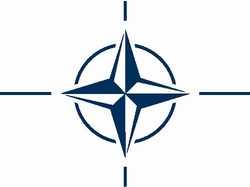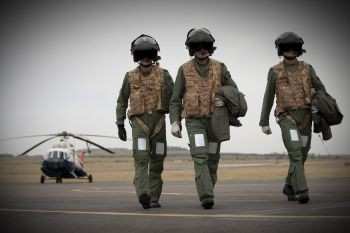Working To Stand Up A Self-Sufficient Air Force
 About 450 U.S. and NATO forces are
working to bring the 3,300 members and 48 aircraft of the
Afghanistan army air corps up to par as part of a long-term effort
to give the country a self-sufficient air force, the U.S. Air Force
general leading the transition team said Thursday. “Our
mission is to set the conditions for a professional, fully
independent and operationally capable Afghan air force that is
ready to meet the security requirements of Afghanistan today and
tomorrow,” said Brig. Gen. Michael R. Boera, commander of the
NATO Training Mission Afghanistan’s Combined Air Power
Transition Force.
About 450 U.S. and NATO forces are
working to bring the 3,300 members and 48 aircraft of the
Afghanistan army air corps up to par as part of a long-term effort
to give the country a self-sufficient air force, the U.S. Air Force
general leading the transition team said Thursday. “Our
mission is to set the conditions for a professional, fully
independent and operationally capable Afghan air force that is
ready to meet the security requirements of Afghanistan today and
tomorrow,” said Brig. Gen. Michael R. Boera, commander of the
NATO Training Mission Afghanistan’s Combined Air Power
Transition Force.
Boera oversees the development of aviation within the Afghan
military and police forces, which includes mentoring, training and
assisting aviation units. Afghanistan’s air forces consist of
the national army air corps and an air interdiction unit, which
teams with the Afghan national police and U.S. forces on
counternarcotics. “We didn’t want to create two air
forces,” Boera said. “We wanted to find the
efficiencies that could be had with our oversight ... one-person
oversight of it ... so that we can maximize infrastructure build,
facility build, and for myself, trainers, if you will, that are
very challenging to come by.”

Boera’s team does its mission with about 450 soldiers,
sailors, airmen, Marines, contractors and NATO partners in four
locations around the country, and he plans to expand to two
additional locations. One of his primary missions is to take care
of the growth and development of the air force and turn it into a
professional force.
The air corps currently has 48 aircraft and almost 3,300
soldiers, including noncommissioned and commissioned officers. They
plan to grow to 146 aircraft and more than 8,000 airmen, Boera
said. The Air Interdiction Unit has nine aircraft and 129 airmen,
and plans to expand to 19 aircraft and 282 airmen, he said. The
mission in Afghanistan is a long-term effort. “You cannot
build an air force over night,” Boera said. To build a good
force takes anywhere from two to five years to develop an air crew,
and up to three-and-a-half years to train an engineer, or
maintainer, from scratch, he said. “My job is to put
ourselves out of a job,” the general said of the NATO
training mission. His goal is to set the conditions for a
transition that allows the Afghans to teach Afghans, and he
indicated the team is seeing that in some areas already.

Boera said the biggest in Afghanistan is bridging a command and
control disconnect with use of the forces. The soldiers have strong
alliances to their own groups and don’t always communicate
externally across all levels of command. Language barriers also are
a problem because many soldiers are learning English. One of the
biggest messages Boera said he conveys to the Afghan forces is that
speaking and learning English isn’t just a U.S. interest, but
a requirement to join the global community of airmen.
The most critical area the Afghan air force is working toward is
the institutional development of the forces through schooling,
technical training and military training, Boera said, adding that
it’s important to develop an intellectual infrastructure to
tie into the building infrastructure being done across the country.
One of the biggest strengths Boera sees is the optimism and
commitment of many young Afghan soldiers. “There is so much
hope, and there is so much excitement in their eyes,” he
said.
He also believes that the air forces will be able to provide a
visible symbol of what the Afghan government can do for its
citizens.
The transition force is working with the Afghan forces to ensure
they maximize their capabilities so they have everything they need
to support their ground forces after the transition. “We push
it up, we aim high, and we do everything shoulder by shoulder in
our embedded partnership with the Afghans and our coalition
partners,” he said.
 ANN's Daily Aero-Linx (04.16.24)
ANN's Daily Aero-Linx (04.16.24) Aero-News: Quote of the Day (04.16.24)
Aero-News: Quote of the Day (04.16.24) Airborne 04.10.24: SnF24!, A50 Heritage Reveal, HeliCycle!, Montaer MC-01
Airborne 04.10.24: SnF24!, A50 Heritage Reveal, HeliCycle!, Montaer MC-01 Airborne 04.12.24: SnF24!, G100UL Is Here, Holy Micro, Plane Tags
Airborne 04.12.24: SnF24!, G100UL Is Here, Holy Micro, Plane Tags Airborne-Flight Training 04.17.24: Feds Need Controllers, Spirit Delay, Redbird
Airborne-Flight Training 04.17.24: Feds Need Controllers, Spirit Delay, Redbird





